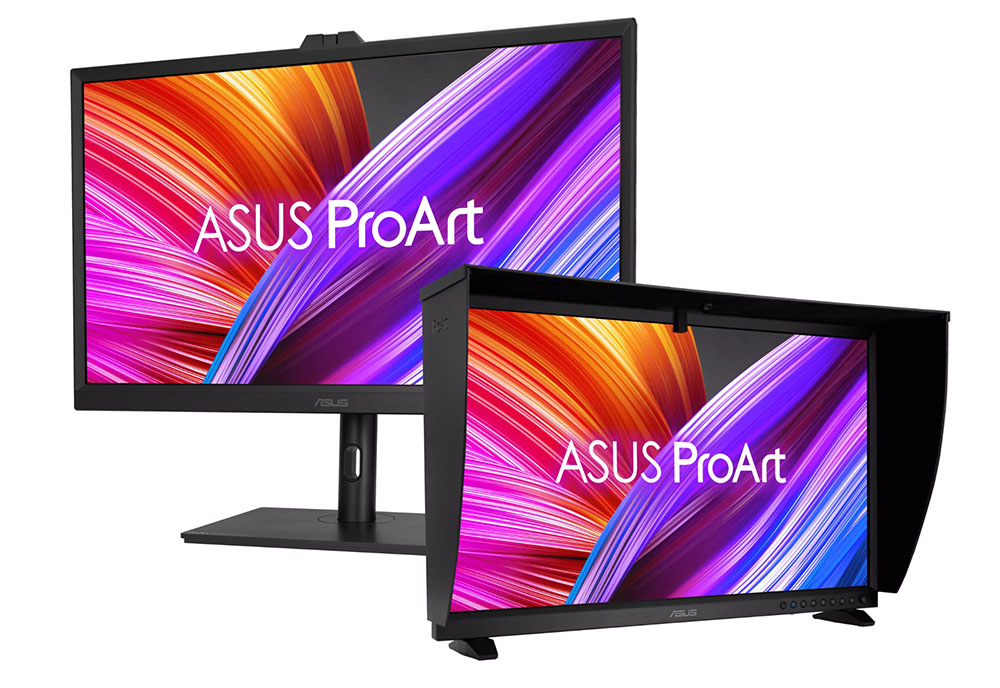Why you can trust Tom's Hardware
I will always maintain that the most important aspect of any computer monitor is contrast. The greater the difference between peak white and minimum black, the better the image. LCD is hampered in this area because it is a light valve design. In other words, it selectively lets light out at varying levels to create an image, meaning that the light is always on.
If a display is self-emissive like plasma or OLED, it is then possible to turn off any pixel to create black. All light is removed; therefore, black is truly black. Plasma is now part of history, but that’s OK because OLED has surpassed it. Today’s OLED panels provide the best image you’ll see from a video display.
Now that OLEDs are becoming available in smaller sizes, monitors like the Asus ProArt PA32DC are possible. As a cutting-edge screen, it’s definitely expensive. But given its capabilities as a reference quality professional tool, it compares favorably to similar products. You can easily pay more for something from Sony’s pro series like the BVM E251, a 24.5-inch FHD OLED that costs almost $11,000. Suddenly, $3,500 seems like a bargain.
Though it has little to offer hardcore gamers, the PA32DC will certainly be attractive to creatives. It is an ideal display for video production, graphics, photo editing or even just workday tasks. With a huge color gamut, superb HDR, accurate color and flexible calibration options, it suits any task. And I shouldn’t conclude without a mention of its rugged and premium build quality. Whether you use the built-in feet or its substantial stand, the PA32DC will serve its purpose for the long term.
The Asus ProArt PA32DC is one of those products that reinforces the motto, “You never regret buying the best.” If you’re in need of a top-shelf professional screen that’s relatively inexpensive, definitely check it out.
MORE: Best Gaming Monitors
MORE: How We Test PC Monitors
Get Tom's Hardware's best news and in-depth reviews, straight to your inbox.
MORE: How to Buy a PC Monitor: A 2022 Guide
MORE: How to Choose the Best HDR Monitor

Christian Eberle is a Contributing Editor for Tom's Hardware US. He's a veteran reviewer of A/V equipment, specializing in monitors. Christian began his obsession with tech when he built his first PC in 1991, a 286 running DOS 3.0 at a blazing 12MHz. In 2006, he undertook training from the Imaging Science Foundation in video calibration and testing and thus started a passion for precise imaging that persists to this day. He is also a professional musician with a degree from the New England Conservatory as a classical bassoonist which he used to good effect as a performer with the West Point Army Band from 1987 to 2013. He enjoys watching movies and listening to high-end audio in his custom-built home theater and can be seen riding trails near his home on a race-ready ICE VTX recumbent trike. Christian enjoys the endless summer in Florida where he lives with his wife and Chihuahua and plays with orchestras around the state.
-
dk382 Reply
It's a professional mastering monitor, not meant for ordinary consumers... It's pretty cheap as far as those go, actually.Kridian said:$3,500!?
minimum $800. -
Kridian I don't think accurate color should be dangled out there like it's some golden carrot.Reply
f-that. -
drajitsh One of the problems of oleds was the burnout of the emitters, with the blue being the most vulnerable. Has that been solved.Reply -
dk382 Reply
Ordinary consumer displays tend to come reasonably well calibrated these days. This display takes things to the next level by having a built-in calibration system that costs quite a bit extra to include. Good, reliable, finely-calibrated tools come at a premium over standard consumer-oriented tools no matter the industry. And that's what this product is—a tool for professionals. This display and other displays like it (LG 32EP950 for instance) are being used as work-from-home HDR mastering monitors since they're cheaper and easier to use than dual-layer LCD mastering monitors (at the cost of lower peak brightness). It's also being used by colorists and graphic artists who demand perfect black levels.Kridian said:I don't think accurate color should be dangled out there like it's some golden carrot.
f-that.
drajitsh said:One of the problems of oleds was the burnout of the emitters, with the blue being the most vulnerable. Has that been solved.
No, not "solved," though it has been mitigated somewhat. They've developed various "pixel refresh" techniques that help the various colored subpixels burn at a more even rate. And this panel has a blank pixel buffer that the screen will move around in so static elements don't stay on the same pixel for too long.
